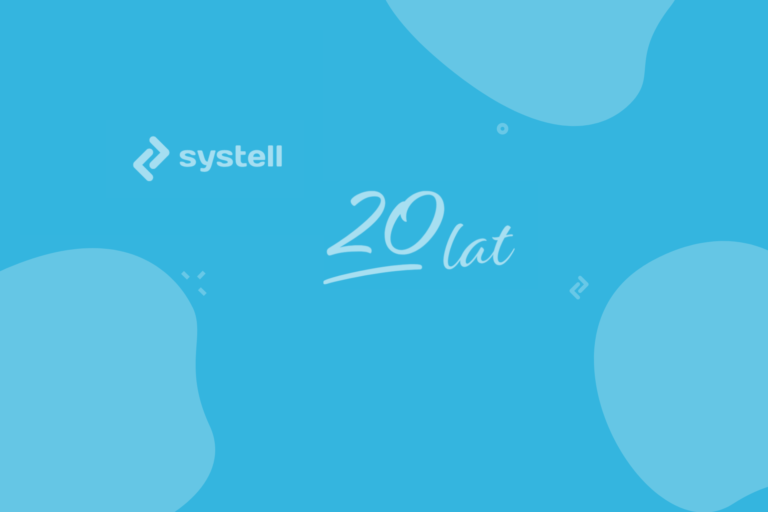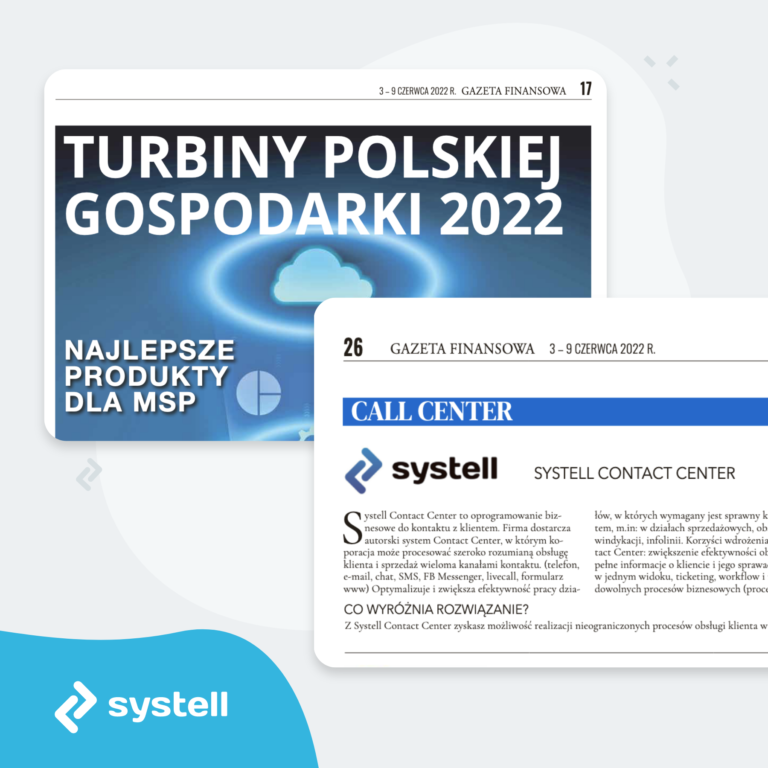Communication processes, both in their operational and technological aspect, offer limitless possibilities for their measurement and expression in numerical terms. Every activity, process step, data flow or task completion time is reflected in figures in ICT system registers.
Key Performance Indicators (KPIs) serve as a tool for managerial control. They allow you to make decisions in a fast and secure way, plan and prioritize certain actions as well as to react to occurring problems or deviations. KPIs also contribute to achieving operational and business goals by organizations.
Over the years, dozens of indicators have been developed, describing efficiency of a contact centre. The utilisation of such indicators as well as their importance for businesses has been changing in line with the development of marketing concepts and ICT solutions. Indeed, they are still evolving, still looking for the ‘Holy Grail’ of efficiency. Several decades ago they were just a technical measure of performed activities, while today they focus more on results related to the feelings, emotions and experience of customers.
While trying to find an ideal KPI set, you must answer two extremely important questions: ‘What kind of knowledge do you need?’ and ‘How are you going to use this knowledge?’. Below, we present 8 critical performance indicators used for the assessment of customer service that you can start using at once.
I. Efficiency and service quality
Focus on interactions with customers. Nowadays customers expect to be able to contact you in an easy way and that their issues will be resolved quickly. Therefore you must choose such KPIs that will provide you with information on call handling efficiency.
1. Service Level (SLV)
This is undoubtedly the most important metric of a contact centre operational efficiency (as well as of other business types). It represents the percentage of calls answered in a given time. Example: SLV = 75 means that the goal is to answer 75 % of calls in (e.g.) 30 seconds or less. The following universal formula is used to determine the SLV:
Service level = [number of calls answered in a given time] / [total number of offered calls] * 100.
The SLV should be determined independently for each communication channel. If multiple service channels are available, the expectations and behaviour of customers differ, depending on the chosen channel
2. First Contact Resolution (FCR)
The FCR metric applies to the result of customer inquiries to a company. It measures the percentage of customer inquiries that were resolved at the first contact. It means there was no need to escalate the issue to the next customer support level and the customer did not have to contact customer support again. The first contact resolution metric shows how effective a business really is in addressing customer inquiries. There are several main factors that affect this metric: a correctly designed routing scheme (smart skills-based routing), agent qualifications and authorisations, number of available agents as well as access to information.
3. Call Abandonment Rate
An abandoned call is one where the caller hangs up before they are connected to an agent. This is another important metric showing how effective a helpline is. The most common reason for abandoned calls is probably that customers wait too long to be connected to an agent, a complicated IVR path or the hold time is too long. The call abandonment rate is measured as the share of abandoned calls to the calls offered in an automated call distribution system (ACD). Usually this metric is high if there is an increased demand for staff, which directly translates to a longer wait time. There is a strong correlation between the call abandonment rate and the level of the customer’s satisfaction from the contact with the company.
4. Average Time on Hold
The average time on hold materially affects the customer satisfaction level. The call hold mode is used by agents if they need to consult their supervisor or another department or when they are dealing with a time-consuming process. It is therefore a result of a customer service model adopted by a company as well as of the agent’s qualifications, i.e. his/her knowledge, skills and authorisations. This metric will also be affected by such factors as the importance of the issue raised by a customer and the way the call hold mode is handled (announcements about estimated wait time, music in the background). Long wait time is a common reason for abandoned calls.
II. The team and agents’ efficiency
The efficiency and quality of work delivered by agents working in customer service should be monitored on different management levels (agent, leader, supervisor) and in different aspects (quality, efficiency, correctness). The efficiency of an agent is a result of many factors that should be continually analysed: the agent’s satisfaction level, staff fluctuation, efficiency in different periods of working time etc.
5. Call Scoring
Monitoring of interactions between customer service and customers allows to identify the factors that affect the service quality. Such analysis should be made according to a standard set of parameters relating to the use of contact standards adopted by the company, accuracy of supplied information and form of communication. Such monitoring is usually performed through the analysis of a random sample of conversations registered in the recording system. It is good practice to focus on interactions that have been marked as deviations in the system, e.g. complaints, withdrawals from services or the interactions which have been scored low by customers in a satisfaction survey conducted after the contact.
6. Agent Turnover Rate
Contact centres have one of the highest employee turnover rates of all industries. The lack of awareness of the agent turnover rate, and in consequence the inability to take remedial actions, results in:
- Lack of work continuity and staffing problems;
- Company’s poor reputation caused by human resources issues and insufficient skills
- High costs of training and continuous recruitment
Companies usually utilise a general employee turnover rate. It is a ratio of the total number of employees who gave up their job in the company year-to-date and the total number of employees currently employed in the company.
III. Customer Experience
Customer experience is currently a key result metric that gives information on both the strategy, operations and technology used in customer service processes. The customer’s subjective perception of communication is the final assessment that determines the quality of the service the customer has received or in any way encountered.
7. Customer Satisfaction
The Customer Satisfaction Index (CSI) is used to determine the level of customer satisfaction with the products or services offered by the company. In order to determine this level a short survey is conducted after the contact to identify the customer’s satisfaction with the completed interaction. The collected data can be analysed both on a global basis, in order to determine the customer satisfaction level in the given channel, and with regard to individual employees as part of the assessment of their work. The survey can be conducted as a phone call, through e-mail/web, Voice-SMS or Text-SMS.
8. Net Promoter Score
The Net Promoter Score (NPS) is used to gauge the loyalty of customers by asking them if they would recommend your business, brand, web service, product or service to friends or family. The respondents rate the questions on a 11-grade scale ranging from 0 to 10, where ‘0’ means lack of willingness to recommend and ‘10’ means full satisfaction and loyalty. Based on the collected responses, the users are divided into three groups: Detractors (users who respond with a score of 0 to 6), Passives (a score of 7-8, i.e. relatively satisfied users who nevertheless are not very willing to recommend your business) and Promoters (users who declare their willingness to make positive referrals and recommend your business/product /website to friends and relatives).
Summary
The indicators of operational and business efficiency have always raised many emotions. The question ‘Which indicator is better or more accurate than the others?’ still remains unanswered. It is worth remembering that monitoring of efficiency is performed in order to improve it. The aim is to enhance customer satisfaction and loyalty, which in turn should translate into increased revenue.
Before you pick the indicator you think is the most relevant to you, you should define what it means to you and what kind of information you want to get from it. Apply the right values to the chosen indicator, that you want to strive for in your business. And lastly, look for the benchmarks to compare the indicators you monitor to the achieved results. Because it is worth knowing what ‘good’ means.
















